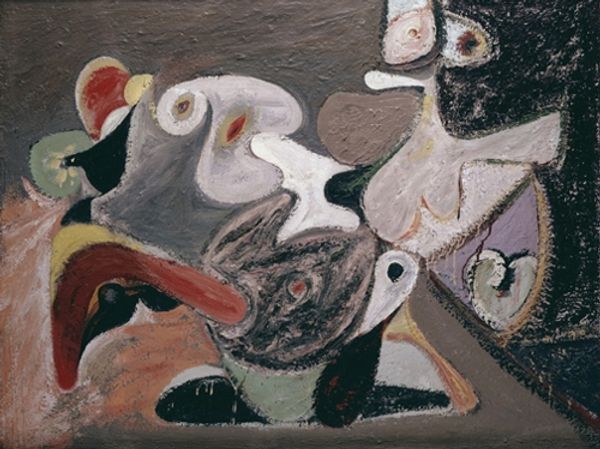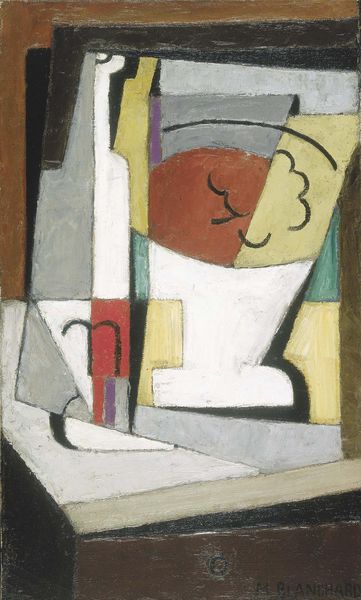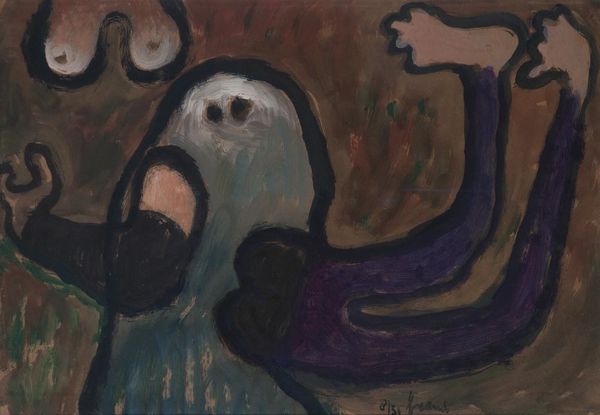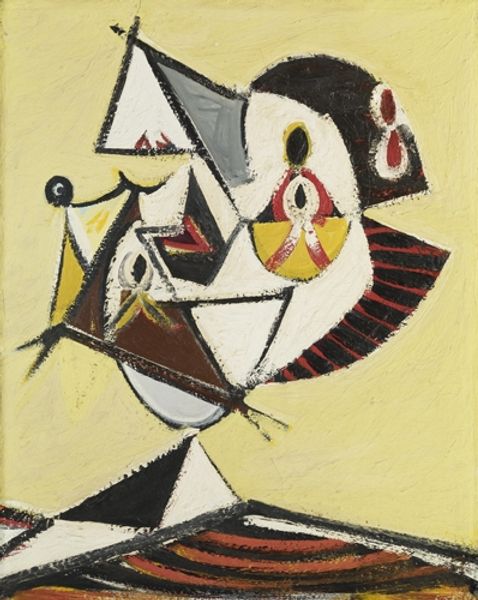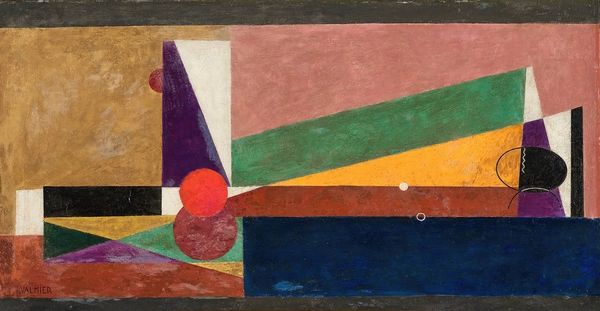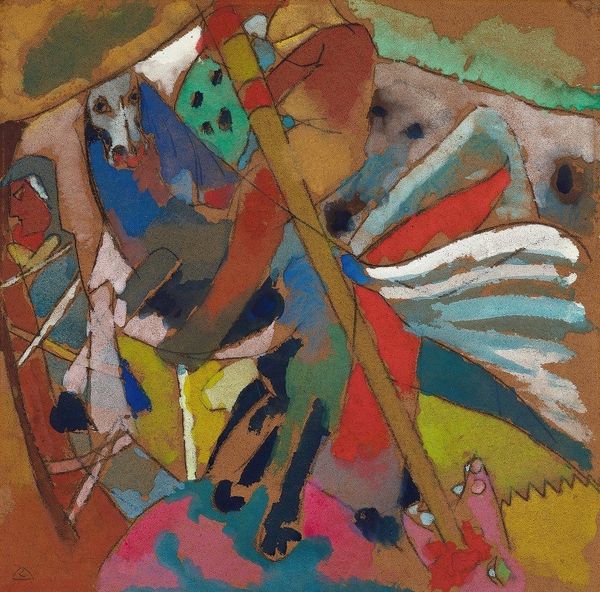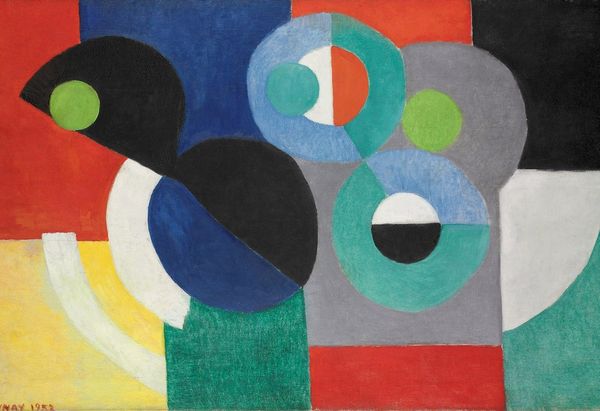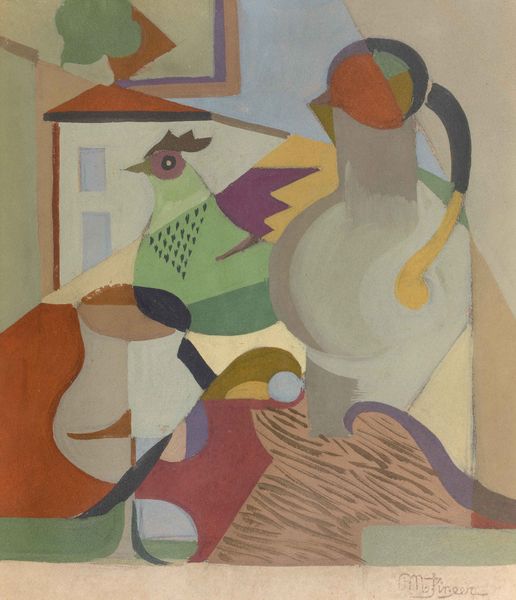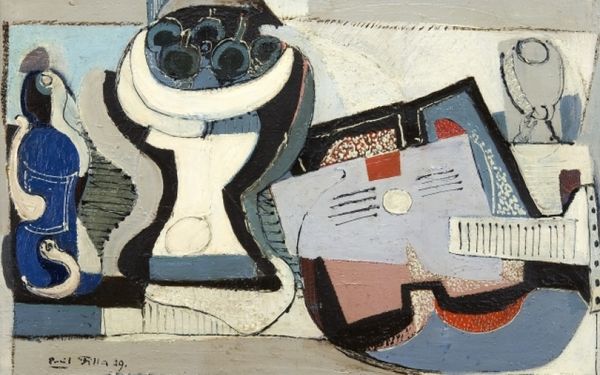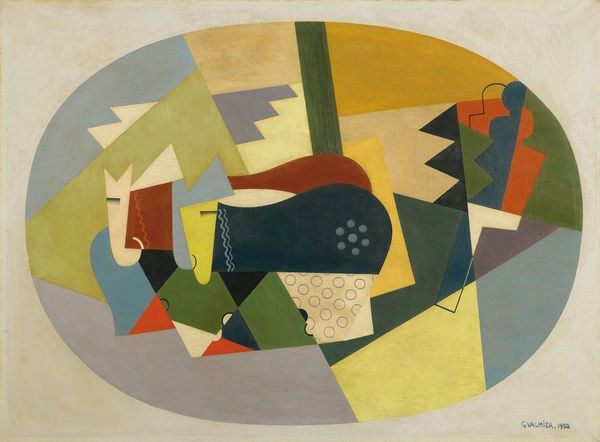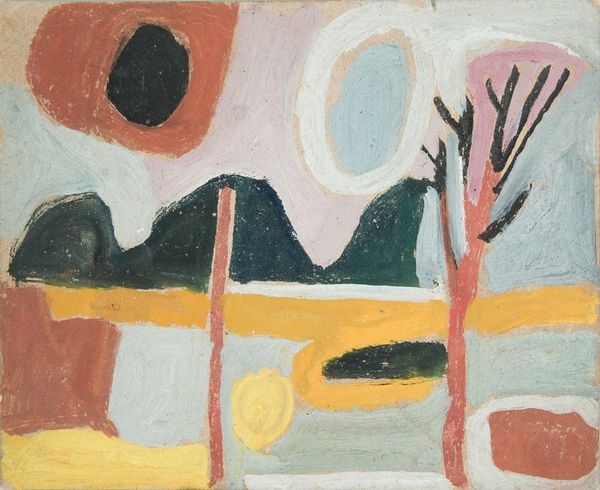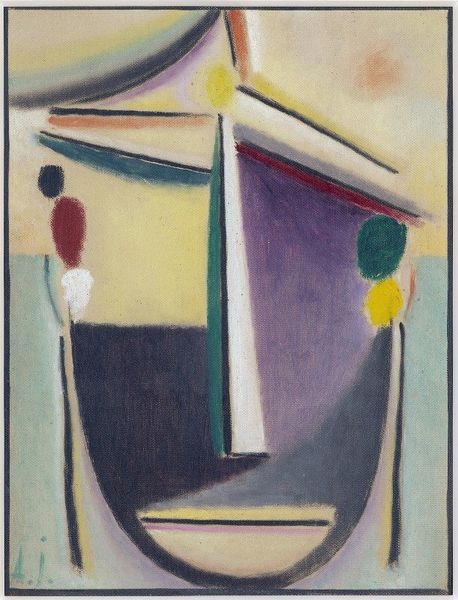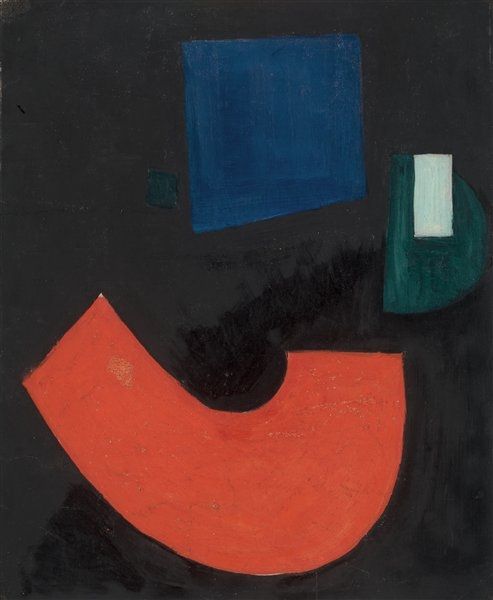
Dimensions: support: 458 x 610 mm
Copyright: © The estate of Julian Trevelyan | CC-BY-NC-ND 4.0 DEED, Photo: Tate
Curator: Julian Trevelyan's "Basewall," painted in 1933, presents such intriguing shapes and textures. My immediate impression is its playful yet unsettling mood. What do you make of it? Editor: The materiality certainly contributes to the mood. Look at those rough brushstrokes! The visible layering of paint suggests a process of building, a physical creation that mirrors the title. Curator: And consider the shapes themselves. Is that a bird-like form looming above a yin-yang symbol? Perhaps Trevelyan is exploring duality: nature versus industry, chaos versus order. Editor: The limited palette, too—those muted blues and grays—speaks to the economic realities of the 1930s. These weren't times for extravagance or showy materials. Curator: Indeed. It’s almost as if the symbols are stripped down to their barest essentials, their emotional weight laid bare. Editor: Ultimately, "Basewall" feels like a record of its making, of the artist's hand and mind at work within the constraints of his time. Curator: A powerful interplay between symbols and the very act of creation.
Comments
Join the conversation
Join millions of artists and users on Artera today and experience the ultimate creative platform.
tate 6 months ago
⋮
Julian Trevelyan lived in Paris from 1931–4 where he studied art and worked at Stanley Hayter’s print studio Atelier 17. There he met Miró, Ernst, Giacometti and Picasso and became a close friend of Alexander Calder, all of whom were associated with Surrealism. He described those years as living ‘the life of a somnambulist groping at experiences, often dangerously, tottering on the edge of dark precipices and suddenly veering away in another direction’. His work at that time often combined simple free-floating forms with a taut architectural background, as seen here. Gallery label, September 2004
